The archeologists are at it again…
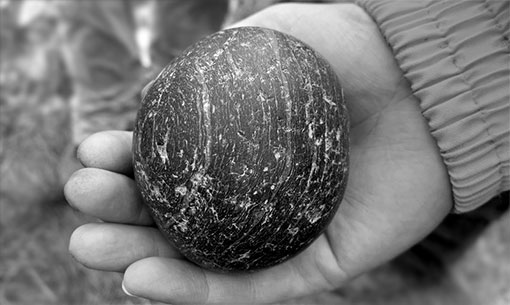
They’ve recently found two of these very round stone balls in an ancient tomb in Scotland. Yes, I am resisting the urge to make a stone balls joke of some description.
About twenty ancient stone balls have been found in the Orkneys and others across Scotland. I was sure I had posted about them before, but I can’t find any such post. The ones in the upper right corner of this Wikipedia article are examples of what I’m talking about.
So what are they?
Researchers say the stones were probably used as both weapons and symbols of power.
Symbols of power? Really? I get that it would be difficult to make such a thing with hand tools, so maybe it was a high status item but…a symbol of power?
Don’t they make more sense as a neolithic one of these?
September 14, 2021 — 6:42 pm
Comments: 7
Even your fingerprints are gendered
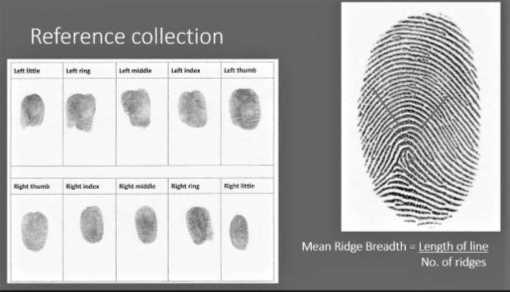
I’ve spent all day at a Zoom prehistory conference. Again. Last one on my schedule.
One of the most interesting talks was a woman who studies finger prints and marks on Iron Age clay pots.
She started by taking fingerprints from 350 modern people to make a baseline. Turns out, fingerprints are sexually dimorphic. I mean, yes, the taller you are the bigger your prints regardless of gender, but apparently you can tell the difference between the fingerprints of a large woman and a small man: the man’s ridges are thicker.
Then she had to calculate average height, which was 4% shorter in the Bronze Age and 6% shorter in the Iron Age. Agriculture shortened people (and lives) – less variety in the diet.
Finally, she had to take off another 6% for clay shrinkage during firing.
She studied two kinds of pots. The first were large cooking and storage pots that were decorated with finger-pokes. Some random, some in patterns. The second were roughly made, utilitarian troughs squished together and fired on the spot for the purposes of evaporating salt water into salt.
Turns out, the big pots were made and decorated entirely by women and children, some as young as five, and the salt troughs were slammed together entirely by men and teenage boys (the youngest was 12).
I love the mental image of Iron Age tots being encouraged to poke pots, randomly.
I hope the highly gendered roles stuck in some craws. Academics (I follow a lot of these same people on Twitter) are woke as hell these days.
June 18, 2021 — 6:12 pm
Comments: 8
Gammon pride
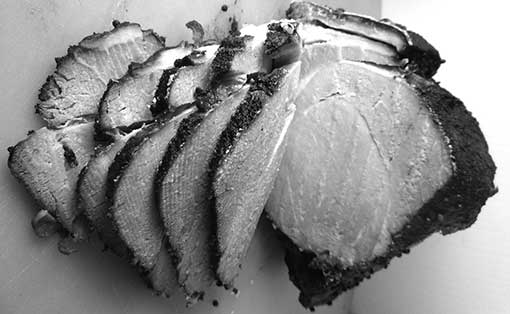
If you have spent any time at all on Limey social media, you will have heard a wokester call an Englishman a gammon. This is especially meant to invoke, I think, a white man of a certain age, pink and fatty. For reasons we can guess, gammons seem to be particularly found of calling other gammons gammons.
I say we own it. And why not? Gammon is a cut of pork they sell here – it’s simply uncooked ham. And who doesn’t love ham? Except, of course, strict adherents to certain pig-deprived religions.
The pig – the wild boar – was sacred to many ancient Germanic gods and goddesses. Tacitus, writing in the First Century, said the Germanic tribes wore boarskins into battle. Boars were a symbol of ferocity worn on the helmets of Anglo-Saxon warriors (Beowolf, for a famous example).
The spectacular Iron Age Garton Slack chariot burial, in East Yorkshire, featured a whole chariot, two horses and a warrior with the head of a pig split open, food side up, on his chest. A last meal in the afterlife.
The archaeological evidence tells us that for hundreds of years, people came from all corners of the island, driving pigs before them, to a giant pork feast at the Winter Solstice at Stonehenge. Among other sacred sites.
In short, pigs: a wonderful, magical animal.
June 17, 2021 — 8:54 pm
Comments: 12
Ooh…check this out!
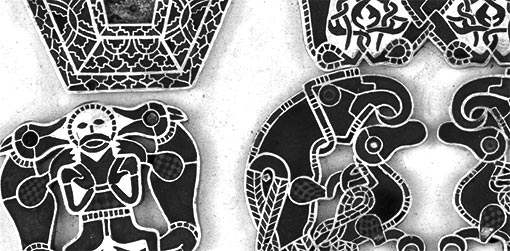
This came across my Twitter today. Here’s the British Museum page for it, for zoomable color.
It’s part of the finds from Sutton Hoo, but it’s not on display and I’ve never seen it. It’s a purse lid, so I reckon the white parts were originally leather. Like a pouch flap, I suppose.
It’s not like the BM not to have a ruler in the image, but to give you an idea, the thing is about eight inches wide. So zoom in on the wire work around the bottom edge and think how unimaginably tiny that is.
The BM describes the materials as gold, garnet and millefiori. Millefiori is glass that is worked often in a colorful cylinder that is then sliced into beads. And oh, look at this – the Wikipedia article on millefiori specifically mentions the Sutton Hoo purse.
Zoom in on the object. See the tiny checkerboard patterns? Those are made of glass. That’s the millefiori. Now zoom out until it’s about actual size. Holy cats, how did they do that in the 7th Century? With no magnifying glasses?
Oh, what – y’all thought I dug this up in my yard?
June 9, 2021 — 8:10 pm
Comments: 9
Treasure!

Uncle B lost a spring in the long grass today, so I dug out my metal detector. It was pretty grubby after ten years in the closet, but a new set of batteries and – works!
By the time I’d got it together, he’d found his thing in the grass without my help, so I decided to do a pass around the garden. And look! I found – a big rusty bolt! It’s still got the nut!
Yes. Well.
Uncle B kindly bought me this detector when we first moved in (because, you know, Tudor farmhouse) and then I found out all the fields around me are protected land. No detectoring allowed. So I went up and down my own lawn like a sad person and found a lot of shit like this. Gosh, people have thrown out a lot of metal junk over the years.
Completely coincidentally, we’ve been re-watching one of our favorite programs from a few years back: the Detectorists. It’s seriously one of the best written and acted programs I’ve seen. I don’t think I’ve ever recommended it on the blog, though, because an awful lot of the humor is around modern English village life. I don’t know how well it would travel.
But what do I know? Uncle B loved MST3K.
June 7, 2021 — 7:14 pm
Comments: 11
Somebody got some poor customer service
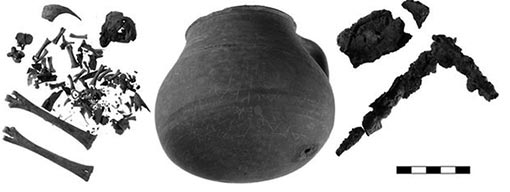
They’ve unearthed a 2,300-year-old year old curse under the floor of the Athenian agora. It was a ceramic jar filled with the skull and lower leg bones of a young chicken. It was pierced by an iron nail (more of an iron spike, if you ask me).
On the outside – written by two different hands – were the names of as many as 55 people (a lot of the writing was worn away) and words that may mean “we bind.”
That’s when the Gregorian chants started.
Okay, Gregorian chants are not really appropriate for ancient Greek curses, but I haven’t seen many horror movies about ancient Greeks. “We bind” kind of creeps me out, for some reason.
Anyway, because it was under the marketplace, leading speculation is that these two were in a lawsuit with the names on the jar, probably craftsmen. Apparently, trials were common in Athens at the time and a bit of a spectator sport.
I have to think our legal system would only be improved by the addition of nail and chicken bone curses.
June 3, 2021 — 8:12 pm
Comments: 3
Soggy

The second day of the Doggerland conference was a little more accessible. The thing that struck me most was right at the beginning: it wasn’t just Doggerland. A very considerable amount of coastline all over the world was drowned by seas that rose for thousands of years. The amount of land lost during this period equals roughly the land mass of South America.
It’s all the black areas in the picture above (this image worked so much better in color).
This is significant because those coastal areas would have been the most hospitable to human habitation at the end of the last ice age. In other words, much of the archaeology of Late Paleolithic and Mesolithic cultures all over the world is perhaps still there, waiting to be found under the silt off the eastern coastlines of everywhere. Woo!
Have a good weekend, fellow Neanderthals!
May 7, 2021 — 6:55 pm
Comments: 18
That was heavy going

Okay, I knew the Doggerland conference was for archaeology professionals and not scum like me, but it was still heavier going than expected.
Like, there was the man who talked for half an hour about the chemistry of how DNA breaks down over time, with molecular orbital diagrams and long strings of equations. And after half an hour of this, he concluded by saying they found DNA evidence of walnut, walnut didn’t grow in Western Europe at the time, so it is probable evidence of both humans and trade.
See, the dumbed-down-for-weasels, popsci version would be just that last bit.
Still and all, every one of the talks had an interesting bit, so it’s worth attending day 2.
Excuse me, my puzzler hurts.
May 6, 2021 — 7:56 pm
Comments: 7
And now for something much farther afield
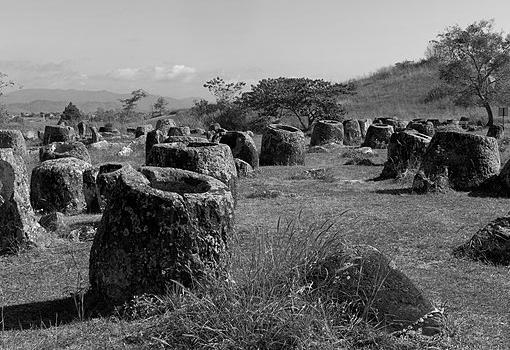
Behold, the Plain of Jars! It’s in Laos. They’ve found a bunch more in the jungle.
These things are seriously large – like, ten feet tall – and they know eff-all about the people who made them. The speculation is that these jars were used as part of funerary practices – to allow bodies to be picked clean before burial as bones. But why would they need so many? Did everyone have a family corpse jar?
They’ve found some more conventional burials (conventional for us, anyway) nearby that they can date to 2,500 years ago. They have no idea if the burial people had any relationship to the jar people. The burials were often capped with a round stone elaborately carved on the underside.
The idea of re-using other people’s sacred spaces is something that came up in that day-long course on West Yorkshire burial mounds. There was one mound in particular that started as a pit, with very old bones at the bottom (which showed signs of cannibalism). A couple more later burials higher up in the pit. When it was level with the ground, there were several more burials that had earth over them, so it began to become a mound. I believe there were a few cremation urns in there, which is late mesolithic. The mound kept growing until it finally assumed the shape we see today. The last burials were Anglo-Saxon, which is thousands of years more recent (and a whole ‘nother people).
Speculation is that the original pit must have been covered with a marker of some kind so they could find it again.
If you find the Plain of Jars at all interesting, I recommend hitting the link and then following the other links embedded in the article. They leads to lots more pictures and data.
Speaking of prehistory, a reminder that the two-day conference on Doggerland is coming up Thursday and Friday. I shall have my nose in a Zoom all day, but I’ll let you know if anything interesting turns up.
May 5, 2021 — 8:27 pm
Comments: 5











